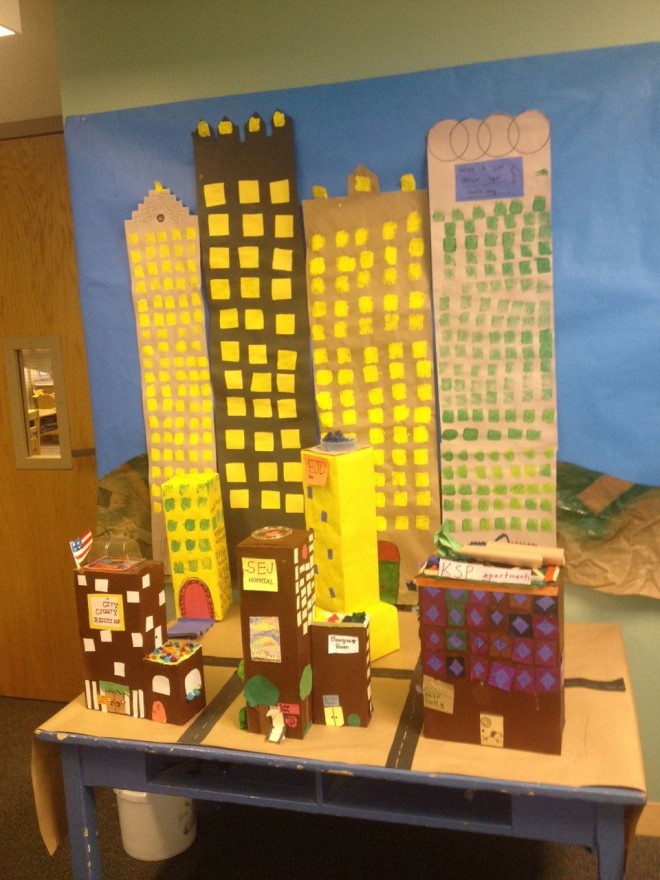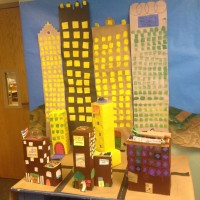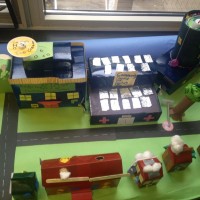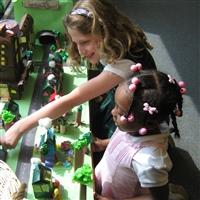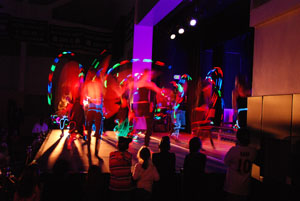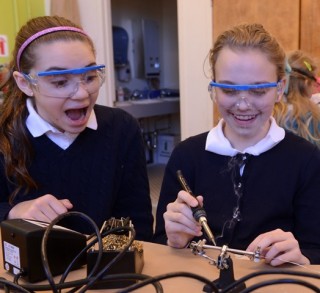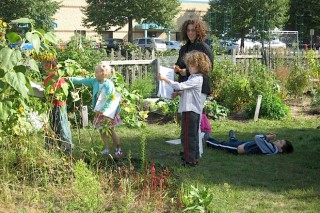Second graders at The Ellis School participate in a cross-disciplinary project-based learning unit each year where they design and build a model of a metropolitan community. In their roles as city planners, students made decisions about the placement of their newly constructed services in the Central Business District, city or suburban neighborhoods or outlying areas. They took into consideration such issues as aesthetics, usage, space restraints, noise, and pollution. The girls also gave special attention to green building and planning. This included solar panels, rooftop gardens, rain barrels, white roofs, windmill farms, and green spaces.
The girls worked in cooperative learning groups to design and construct streets, bridges, tram, tunnel, incline, parking facilities, signage, parks and recreational spaces. As neighborhoods and services sprang up, the girls positioned their single-family homes as well as the town houses, apartment houses and duplexes they made with a partner.
Math Integration
Mathematics was integrated into real-life problem solving. Students used math skills as they considered: How the creation of zip codes in 1963 still helps the post office deliver our mail. How the interstate highway numbering system indicates compass direction. How the geometric shapes of traffic signs indicate what they will tell a motorist. How every year the cost of goods and services seems to rise about 3 %. How mathematical scale works and how you can use multiplication to estimate the height of trees and tall buildings. How much trash our communities produce, and how we can help reduce, reuse, and recycle.
Technology Integration
Using a camera on a tripod and a specially-marked turntable, the girls documented their work to create a virtual tour of each student’s service. In peer learning teams, one student moved the turntable in 10-degree increments while her partner took photos to create a 360-degree.
